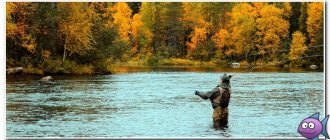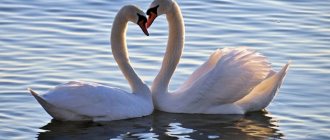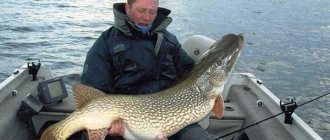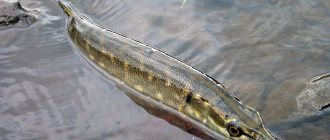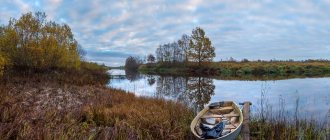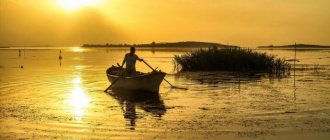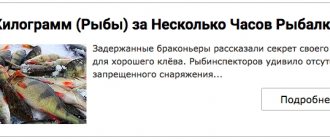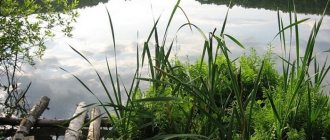More than 73,000 reservoirs with an area of 0.1 hectares. This is exactly how many lakes there are, according to Wikipedia, on the territory of Karelia. Is this a lot or a little? “What a question, of course it’s a lot,” a geographically savvy reader will now say, and he will be... right. The fact is that the total area of all lakes in Karelia is 36,000 square meters. km, and the fresh water reserve is 145.2 km³. If we divide this water among the entire population of Karelia, then there will be more than 23,000 liters for each resident. The figure is, whatever one may say, impressive.
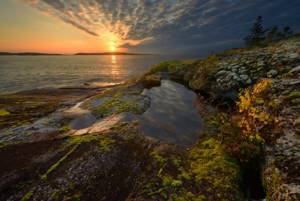
So Karelia is considered quite rightly a country of lakes, and it is not surprising that at different times writers and poets paid attention to this particular feature of the region. “And you can’t understand whether the sky has fallen into the lake, and you can’t understand whether the lake is floating in the sky,” the famous Soviet songwriter Kim Ryzhkov, author of the famous song “Karelia,” wrote about the lakes of the Republic.
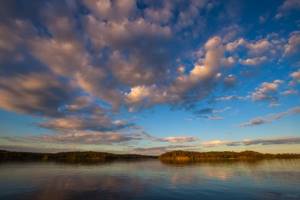
Why are there so many lakes in Karelia?
This is “to blame” for the huge glaciers, which in the distant past, having accumulated on the territory of the Scandinavian Peninsula, slowly spread across Northern and Central Europe, killing all living things with their deadening breath. When the time of the glaciers passed, they began to retreat back to the North, causing tectonic shifts and tearing up the earth with their huge ice bodies. That is why most lakes in Karelia stretch from northwest to southeast.
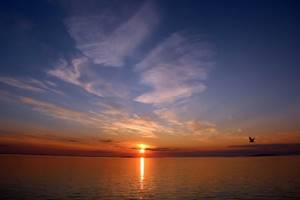
In addition, precisely due to the specific origin, most of the lakes, rivers and swamps in Karelia are connected with each other into one giant ecosystem. Large and small lakes communicate with each other through hundreds of rivers and streams. Even tiny forest and swamp “lambdas”, fed mainly by groundwater and small streams, are also part of this huge network that entangles the whole of Karelia. This is a real masterpiece of Nature, which created, perhaps, the most impressive “water necklace” in the entire North.
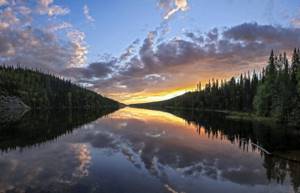
Lakes of Karelia
0
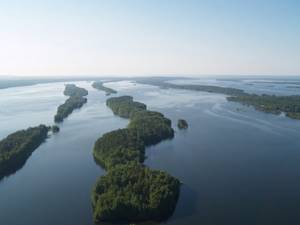
“I will dream about Karelia for a long time...” this is the most important song about Karelia, about this northern land. Who doesn't know her? Many songs are dedicated to this beautiful, enchanting land. A person who has visited these parts feels happier and more cheerful. What kind people live here! What magical forests and fabulous hills! And what endless lakes, you just want to go fishing or just watch a magical sunrise on the shore near the water! It’s not for nothing that Karelia is called the country of forests and lakes. Where did so much water come from? In any other region of Russia you will not find such a number of fresh lakes.
The origin of the miracle lakes of Karelia.
You open a map of Karelia and see that the entire region is striped with bodies of water. How did it happen that oblong lakes were born here? The largest lakes in Karelia are Ladoga, Onega, Topozero, Segozero, Syamozero and others. They arose as a result of the gradual formation of tectonic depressions. The origin of the basins was formed due to the movement of the glacier. That is why the lakes here are very deep. There are bodies of water that are not as deep as, for example, Lake Ladoga. They occurred without the formation of tectonic fractures. Medium-depth lakes arose due to the passage of a glacier through plains and small depressions in the earth's crust. Some lakes in Karelia can be called river lakes. These are bodies of water formed by river floods. However, some of them are of artificial origin. For example, Pertozero, Losossinnoye, Mashozero. Even in the time of Peter the Great, dams were built on these rivers of the same name, which became the basis for the formation of lakes with the same name. Dams were typically built to increase and transfer the river's driving force to local manufacturing plants. The waters of the Pertozero reservoir, for example, turned the wheels of the mechanisms of the Konchezersky steel plant. By the way, the ore for which was mined on the next lake - Konchezero. Workers on rafts retrieved them from the bottom using large buckets. In the same way, medicinal mud is still extracted from nearby Pertozero, which, in addition to being used in local sanatoriums, is exported throughout the world.
Lake recharge in the main part occurs with the help of melt and rain water. If this water, before entering the lake, passes through swamps (which, by the way, in Karelia occupy 30% of the total territory - this is the wettest area in the world), then it acquires a brownish - beer-like hue. These are humus bacteria. In many forest lakes - lambas (these are small, usually drainless forest lakes in Finland and Karelia) only perches are found. It’s precisely the fry of these perches that feed on humus bacteria, and the larger fish feed on the fry. The second option for lake recharge is springs. They make the water in the lake clearer and colder.
Many lakes in Karelia are surrounded by swamps. Swamp growth into a lake is a slow but inexorable process that has turned more than one Karelian lake into a swamp. Floating marshy mosses create an ideal habitat for a variety of fish. Therefore, one of the ways of fishing in Karelia is to place nets along the swampy shore and then run through the moss to drive the prey out from under it. Or often the lake is overgrown unevenly, leaving open areas - windows into which lake inhabitants like to look.
Some lakes of Karelia stretch from southeast to northwest. This unusual elongation of these lakes is determined by the glacier moving in this direction. Such an example is Lake Konchezero, located 20 km from Petrozavodsk. With a length of 22 km, its width is no more than 3 km. Moreover, the lake is divided by a network of the same narrow-oblong islands.
A certain elongation of lakes in Karelia is easy to notice on the map:
Another way lakes appear in Karelia is tectonic. An example is Lake Pisanets. With a width of only about 200 meters and a length of 6 km, the depth of this lake in some places is about 200 meters. This lake is a real pearl of Karelia. Located in the heart of the taiga forests. It looks amazing! Imagine a long, deep chasm in the earth's crust filled with water. There are rocks and stones hanging from both sides. Most often, people who have visited Pisan have mixed feelings. Some arrive in euphoria, others think about the majesty and strength of our nature. In other words, here every person will experience delight and enchanting emotions.
The reservoirs of this republic belong to the White and Baltic Seas. Most of the lakes belong to the White Sea basin, that is, in the northern part of the republic.
The most interesting bodies of water in the Republic of Karelia.
1. Lake Ladoga.
In Europe, Ladoga is considered the largest lake. It is considered unique and truly powerful! How did such beauty appear? Ladoga arose as a result of glacier movement, which occurred gradually and at times. Previously, the lake belonged to the Baltic Glacial Lake. Due to rising water in the world's oceans, we can observe Ladoga as an independent lake. The rocky coastal part of Ladoga gives way to plains. Wide forests give way to pine forests. The nature here is very diverse and unique.
Lake Ladoga is full of vibrant life. The reservoir has rich flora and fauna. Various and rare aquatic plants and countless river fish. Some of them are listed in the Red Book. A huge number of birds live near Ladoga: both rare and familiar birds. Animals also willingly conduct their activities near a unique reservoir. Here you can meet the Ladoga seal, listed in the Red Book.
And they say a lot about Ladoga, not only because it is so beautiful, but also because interesting legends originated here. And every resident of these places tells stories with such enthusiasm that you want to believe in the veracity of these legends.
One of the legends says that long ago, in ancient times, a creature unknown to the people lived here. It wandered from one part of the reservoir to another. Therefore, no one could catch him. Eyewitnesses described the creature as follows: a very long neck, like a snake, huge black eyes, a heavy wet body, glistening with water. The mystical creature was very similar to Nessie.
2. Lake Onega.
This no less majestic lake appeared in much the same way as Ladoga, namely as a result of a tectonic fault.
The Onega reservoir is characterized by spring flooding, so the water near the shore is swampy. Hence the appearance of ducks and swans. Taiga forests grow near the coastal part, untouched by people. The reservoir contains a variety of fish species: freshwater salmon, bream, freshwater trout, smelt, pike perch, eel and others.
There is something mystical in the beauty of Lake Onega. So, where captivating beauty meets, interesting magical stories appear that you want to believe and not believe.
The existing island called Bolshoi Klimetsky is well known to any local resident. A long time ago, the Merchant Klimentov, who accidentally ended up on this island on his ship, decided to build a monastery here. But no one knew, not even the merchant, especially since there had previously been a pagan temple here on the island. Since the Klimets Monastery was built, people have often seen strange lights and silhouettes. It is said that there were witches' Sabbaths there. Needless to say, later researchers and tourists began to disappear on this island. Of course, then they returned, but only after several days and everyone was not in the best moral state.
3.Lake Yanisjärvi.
You can find it in the southwest of the republic. It belongs to the Lake Ladoga basin. It has more than 40 islands and surrounds itself with ancient forests.
The lake is also called hare lake and meteorite lake. Why this name? The fact is that a long time ago there was a meteorite crater on the site of the reservoir, and at the beginning of the 20th century people began to notice luminous balls. Since then it has been called meteorite. The mysticism is that in addition to luminous balls, local residents saw the water in the reservoir glowing.
4.Murom Lake.
This reservoir is small and located near Lake Onega. They are separated by a small piece of land.
Lake Murom also has a mystical reputation. Once in the 20th century, a fire started near the lake, everything was on fire. Rescuers and firefighters saw with their own eyes how a yeti or something very similar to this creature climbed out of the thicket. Interestingly, the Murom Yeti was previously described in the writings of Finns and Karelians.
It would take a long time to list the lakes and their beauty. After all, there are about 60,000 lakes in Karelia! This region is rich in water resources; there are many freshwater bodies of water. Of course, fishing holidays are common. There are almost 50 species of fish in Lake Ladoga alone! In the country of forests and lakes, true harmony of nature reigns; to understand this, it is worth visiting this republic
The most famous lakes of Karelia
When it comes to natural attractions, then quite often the most famous object is considered to be something large, larger than everything else. In the case of lakes in Karelia, this rule also works, since Lake Ladoga and Onega will certainly take the first places in our TOP famous lakes in Karelia. However, there will be other, no less interesting bodies of water on this list, even if they are quite small.
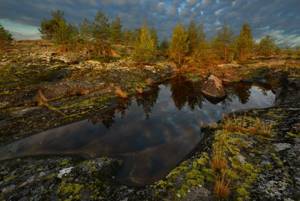
Fishing in Karelia in Summer
Summer in Karelia is the most active phase of fishing. In summer, the weather conditions here are the most favorable for fishing. Many fishermen rely on summer. During this period, every fisherman, both experienced and beginner, will have a catch. Summer is a great time to catch big trophies. The largest number of fish caught occurs in June–July–August. At this time, you can fish with almost all types of gear and all types of bait. With such an abundance of fish, you can experiment with bait baits.
Lake Paikjärvi in Karelia
A small clean lake, which is located only 25 kilometers from our park hotel. Of course, it’s still not worth drinking from the shore here, but it is from this lake that water is taken to supply the nearby city of Lakhdenpokhya. The total area of Paikjärvi is no more than 2 square meters. km, maximum depth is about 10 meters. Accordingly, you won’t find a truly “big fish” like on Ladoga here, but it’s quite suitable for amateur fishing.
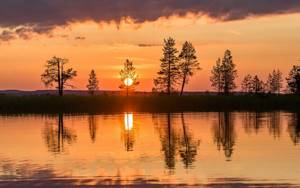
The second name of Paikjärvi is Pike Lake. There really is plenty of pike in the lake, but it’s difficult to catch trophy pike here, but you can catch a fair amount of small grass fish during the season. And if there is not enough, then dilute the catch with perch. There is also plenty of this predator in Paikjärvi.
Along the shores of the lake there are quite a lot of gardening and various tourist recreation centers, so it will be difficult to be alone with nature here, especially if you approach the lake from the south. There is practically no development in the northern part of Paikjärvi, but there are no access roads there either, so you will have to get there either on foot or by boat.
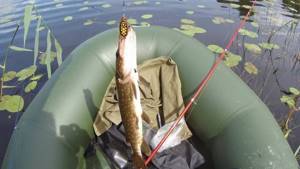
However, walking has its advantages when it comes to the second half of summer or early autumn. A huge number of mushrooms and berries grow along the shores of Lake Paikjärvi, so if you are going for a walk in the forest, be sure to take some containers with you.
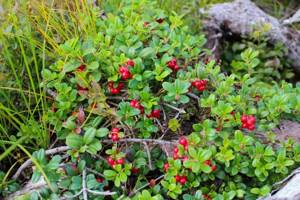
Fishing in Karelia in autumn video
It is best to go fishing in Karelia in the fall; it is in the fall that the fish begin to eat. With the first cold snap, the fish's appetite increases even more, since it needs to gain as much fat as possible before winter. Therefore, fishing is better on autumn days. On such days, the most common fishing is for pike, perch, whitefish, and roach. Here are some fall fishing tips by month.
September . In this first month of autumn, fish begin to go to the depths to search for wintering pits, so it is better to fish from a boat and closer to the pits and further from the shore. It’s better to take a spinning tackle.
October . The first frosts are already starting here. Therefore, some species of fish stop feeding and sink to the bottom. It is better to fish with spinning rods and live bait. If you fish from a boat, the chances of catching increase several times.
November . In November, almost all lakes are already covered with ice. All that remains is to catch the predator, so it is better to use winter lures. And gradually switch to winter gear.
Lake Metsolanselka
Another small lake, located just 19 kilometers from Sorola Village. Metsolanselka communicates with Lake Ladoga through a complex system of straits, so it can be reached by car or boat. If you go by car, take the A-121 highway to the village of Miinala, and then turn towards the village of Mikli. Having driven a little further from the village, you can find a road that goes almost to the shore of the lake.
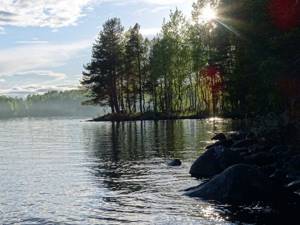
Lake Janisjärvi
This is a larger body of water, located about 100 km from our recreation center. However, in this case it is worth spending time on the road. Yanisjärvi is one of the most mysterious bodies of water in the Ladoga basin. Let's start with the fact that the history of the origin of the lake is still unknown. Officially, there are two opposing theories:
- Janisjärvi was formed as a result of a volcanic eruption about 700 million years ago;
- 700-750 million years ago a meteorite fell here, in the crater of which a lake appeared.
But these are not all mysteries. A significant part of tourists who come to Janisjärvi are attracted not only by wonderful fishing and beautiful nature, but also by a certain fame of the lake as a place where inexplicable phenomena regularly occur.
There is a lot of evidence of various kinds of mysterious incidents on the lake. Usually local residents talk about a strange buzz coming from under the water, or about a bright glow from the depths of Janisjärvi. This happens especially often in the northern and northeastern parts of the lake.
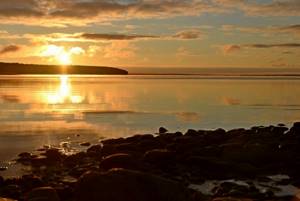
There are also references to other strange events that took place here at different times. Thus, the first written mention dates back to the beginning of the 20th century, when student Pyotr Klemeshev, traveling around Karelia in search of examples of local folklore, observed a mysterious fireball hovering over the waters of Janisjärvi.
After this, several more similar cases were documented, so if you decide to go on vacation to Lake Janisjärvi, then be prepared for any development of events. Although, most likely, you will simply enjoy excellent fishing and amazingly beautiful sunrises and sunsets.
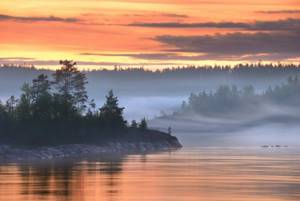
Syamozero
It is located in the southern part of the Republic, just in the middle between lakes Ladoga and Onega. The area of the reservoir is 266 km². There have never been any industrial enterprises on Syamozero, so this place is perfect for relaxation. Fishing on the lake is also good, with more than 20 species of game fish believed to live here.
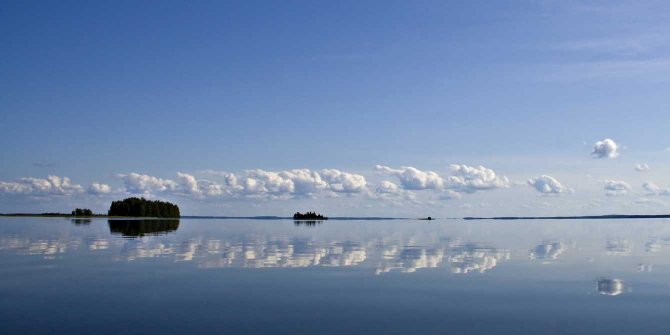
In addition, a branch of the international tourist route “Blue Road” runs along the southern shore of Syamozero. There are still villages here that have preserved the traditional way of life and historical layout; the poet Syamozerye is included in the official list of historical and cultural territories of the Republic of Karelia.
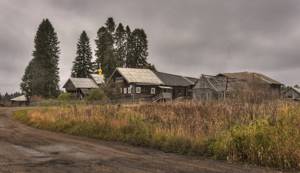
Vygozero
Located in the middle part of the republic. The reservoir is the third in size among all the reservoirs that Karelia is rich in. Lakes Ladoga and Onega are much larger, so the gap in size is significant. The area of the water resource is 1.5 thousand square kilometers, the average depth is six meters. The lake has a slightly elongated shape, its surface is divided by islands into small bays and separate zones. In a word, the structure and relief of Vygozero is very complex and confusing.
You can have a great time on the banks of the reservoir, grilling shish kebab and potatoes over a fire. The landscapes are so picturesque that you get the impression that you are visiting a fairy tale. There are also tourist centers here that cordially open their doors to hunters and fishermen. Equipment rental, providing excellent places where you can practice your favorite hobby, equipment cleaning, huntsman service - this is an incomplete list of the most popular services. The lake is navigable, so you can take a ride on the local tourist boat or rent a two-seater boat so that you and your significant other can experience a romantic sunset in the middle of a huge body of water.
Segoozero
The third largest lake in Karelia, located north of the city of Medvezhyegorsk. There are about 80 islands of different sizes. Fishing on Segoozer is as good as on all large reservoirs of Karelia; about 17 species of fish live here. In addition, the coast of the lake is the ancestral territory of a small subethnic group of the Karelian people - the Segozero (Padan) Karelians or Lappis. So lovers of local color and Karelian folklore can find something interesting in the villages surrounding Segozero.
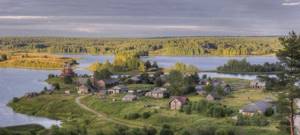
Segozero
Karelia, whose lakes are the national wealth of the country, invites vacationers to visit this reservoir. It is quite deep - in some places the sandy bottom is located 100 meters from the surface. The area of Segozero is 750 square kilometers. It is an ideal holiday destination, especially for people who are susceptible to chronic respiratory diseases, have lung problems, or suffer from asthma or bronchitis. The banks are framed by numerous coniferous trees. Inhaling the aroma of pine trees, a person feels real relief. They say that by regularly spending holidays here, patients suffer less from ailments, some are even completely healed.
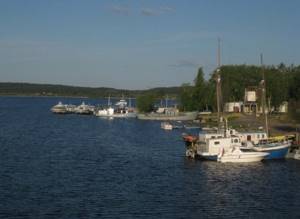
Swimming here is not recommended, as the coastline is rocky, dotted with jutting rocks and swamps. In addition, the lake is very cold - the ice surface begins to melt only at the end of May. But you can skate almost all year round, with the exception of the summer months. 17 species of fish live peacefully in Segozero, so be sure to bring a fishing rod and spinning rod for your vacation. Interestingly, the lake is also famous for anomalous phenomena. Locals talk about regular tsunamis and sudden disappearance of water.
Ladoga lake
The largest freshwater body of water in Europe, the second largest lake in Russia, “Lake Great Nevo”. Ladoga stretches from north to south for almost 200 km, from west to east for more than 120 km. The maximum depth is 233 meters. Large and small islands, the famous Ladoga skerries, long sandy beaches, huge mighty cliffs and ancient forests surrounding the lake along most of the coast - all this and much more you will find on Lake Ladoga.
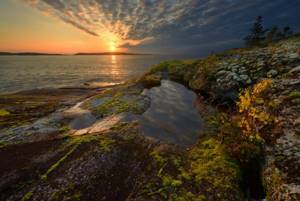
Ladoga is not only a relief, but also its inhabitants. There are few bodies of water in the North so rich in fish. Pike, burbot, pike perch, perch, roach, asp, catfish - in total more than 53 species of fish live in the depths of Ladoga waters. Going fishing here is the cherished dream of almost every real fisherman.
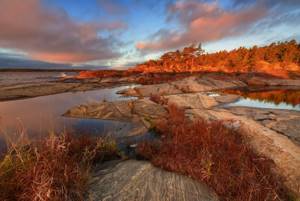
There are many other natural and historical attractions on the shores of Ladoga. This is the well-known Nizhnesvirsky reserve, the islands of Valaam and Konevets, famous for their rich Orthodox heritage, the “Road of Life” memorial, which includes 7 monuments and many other interesting objects. A tourist planning to relax in the Ladoga region never faces the question of what to visit today. Most often it sounds different: “How to have time to see everything.”
Maybe this is why, having once come to relax on the shores of Lake Ladoga, many people want to come back here again and again. They say that Ladoga does not let go. This lake is a whole huge world that you want to explore again and again, and learn in a new way each time.
What kind of fish is found in Karelia?
If there are many different bodies of water, then the abundance of fish will be quite diverse. All fish in Karelia can be divided into three types: marine, migratory, lake-river. Some fish can be representatives of several groups at once.
- Marine . The main habitat of this group is the White Sea. These include salmon, cod, whitefish, herring, smelt, flounder and navaga.
- Passing . The group of migratory fish includes salmon, trout, salmon, smelt and whitefish. This type of fish got its name due to the difference in places of residence and spawning. They spend most of their short lives in lakes or seas, and for spawning they go to rivers. This would not be so surprising if you did not consider the fact that some fish swim tens to hundreds of kilometers, swimming against the current and even jumping over particularly difficult places, such as rapids or small waterfalls. They make the jump using a run-up and a “standing wave”, which throws the fish up 3-6 meters forward. So, when you see a flying fish, you don’t need to be amazed - this is simply its vital necessity.
- Lake-river . They live their entire lives in rivers or lakes, where they also choose places for spawning. The lake-river group of fish includes pike perch, perch, burbot, pike, bream, palya, grayling, whitefish and trout.
In general, in the vastness of Karelia you can find more than 60 different species of fish. Most of them are salmon, but there are also many carp, which, however, live only in the southern reservoirs of the republic.
In the largest lakes you can certainly see pike, burbot, roach and other relatively large fish. Trout is much more difficult to find, and palia is considered a rarity and a great success for fishermen - it is found only in 18-20 lakes throughout Karelia. And some of them are very difficult to get to.
Lake Onega
The second largest lake in Karelia. On the shore of Lake Onega stands the capital of the Republic - the city of Petrozavodsk. Onego stretches from south to north for 245 km, and the width of the lake from south to east is 91.6 km. The maximum depth of the lake is 127 meters. The northern shores are heavily indented; here numerous lips extend into the mainland - bays that extend far into the land.
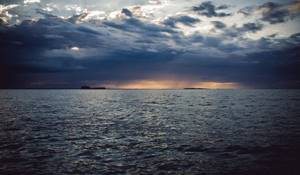
Like Ladoga, many species of fish live here. Lake salmon, sterlet, trout, vendace, whitefish, haris - more than 47 species in total. Fishing on Lake Onega is a real adventure in which both an experienced master fisherman and a novice fishing enthusiast can get their catch.
The main attraction of Lake Onega is the famous Kizhi Island, a UNESCO World Heritage Site in Russia. Without exaggeration, a unique open-air museum of Russian wooden architecture has been created on this island, exhibits for which were brought here from all over Karelia.
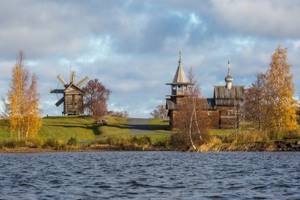
Features of fishing in winter
During periods of severe frosts, fishing stops. Only a few weeks during the entire winter can you go fishing. It’s better, of course, to fish when the ice begins to melt, then the chances of returning from fishing empty-handed are great. It is not possible to give exact recommendations by month. I will give a short list of those types of fish that local fishermen in Karelia still catch in winter.
Grayling. You can often catch grayling on the lakes. They catch it using a regular winter fishing rod on a vertical spoon.
Perch. In winter, it lives at depths of over 8 meters, as it does not tolerate severe frosts. The best bait is maggot or bloodworm.
Burbot. If you are going to catch this beauty, then stock up on fishing line because you will have to look for it at a depth of 10 meters. Use a spinner as bait. Active biting begins in the second half of February.
Roach. A favorite of many novice fishermen because it is caught not far from the shore and is very active. It is better to catch it with a jig; bloodworms work well as bait. The active biting phase begins with the first thaw.
Briefly about the main thing
Of course, our list of famous lakes in Karelia is far from complete. But even if you try to collect in one text all the reservoirs about which you can say at least a couple of phrases, you will get not an article, but a whole book, a real guide to the lakes of Karelia. Someday we will certainly write it, but for now, read something in this section of the site. A lot of interesting and useful things have accumulated there.
If you want to get to know the lakes of Karelia better, there is probably no better way than a boat trip along the Ladoga skerries. The service is provided from early May to late autumn. We help our park hotel guests with organizing fishing trips, both summer and winter, at any time of the year. Also in winter, we will help you organize fishing on nearby lakes.
Should we be afraid of wild animals in Karelia?
There are not so many forest animals that pose a danger to humans in Karelia, and all of them do not wander into places where people often camp. Therefore, it is better not to go to the most remote and secluded places, otherwise you may still bump into someone.
A small danger comes from vipers. As a rule, they themselves try to get away from people, but sometimes they come across too calm individuals. The viper does not begin to attack first unless you step on it or are a couple of tens of centimeters away from it.
However, there is no need to worry about this: a wary viper begins to hiss as soon as a person approaches it within a few meters. Then you should carefully leave (do not run). The viper's venom is not fatal and does not cause any complications; poisoning from a bite can be cured in a couple of days.
The most important animal danger in Karelia is ticks. There are a huge number of them here and some transmit various diseases. Therefore, before going into the forest you need to get vaccinated. Most ticks occur in May, but there are plenty of them in summer too.

